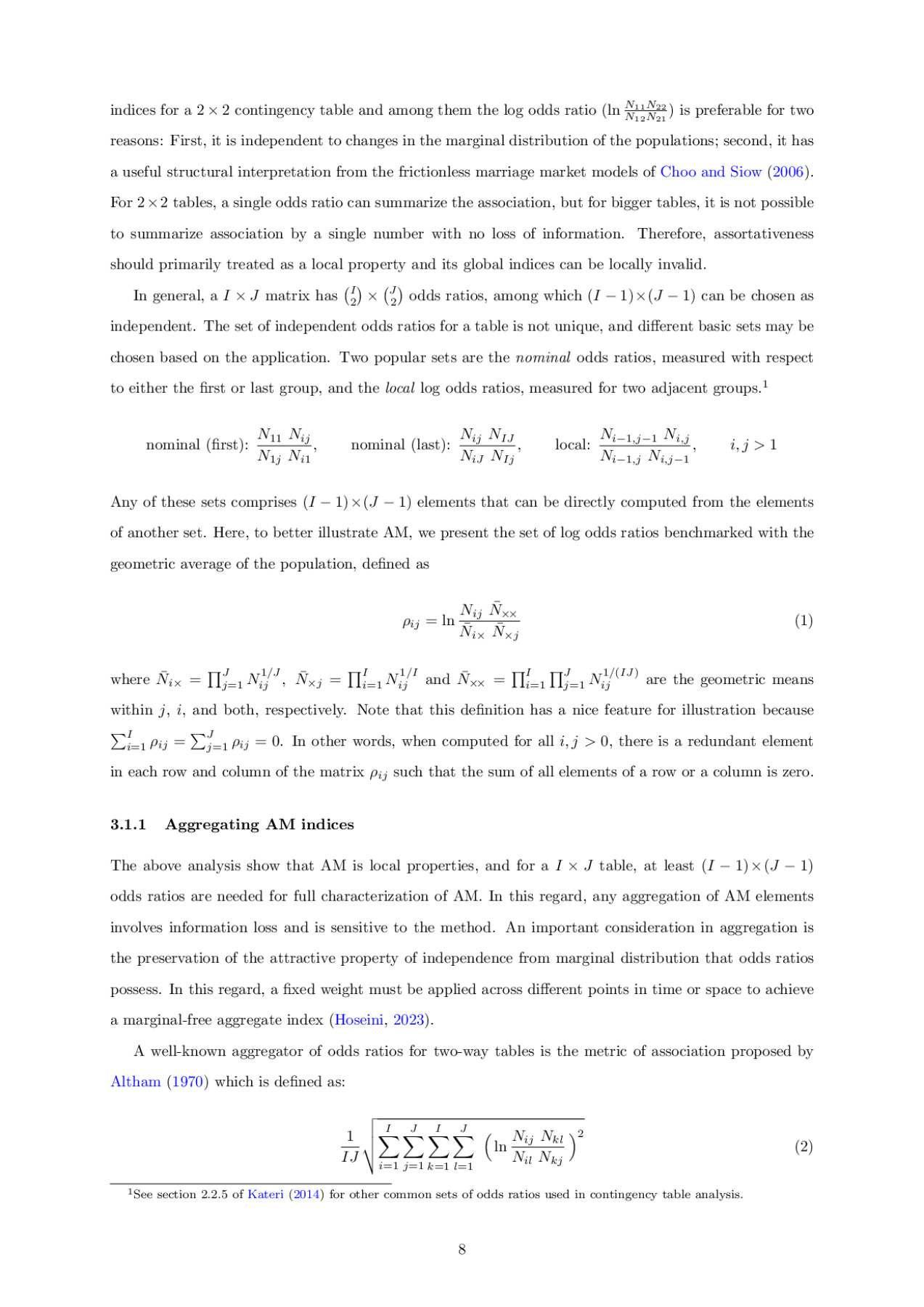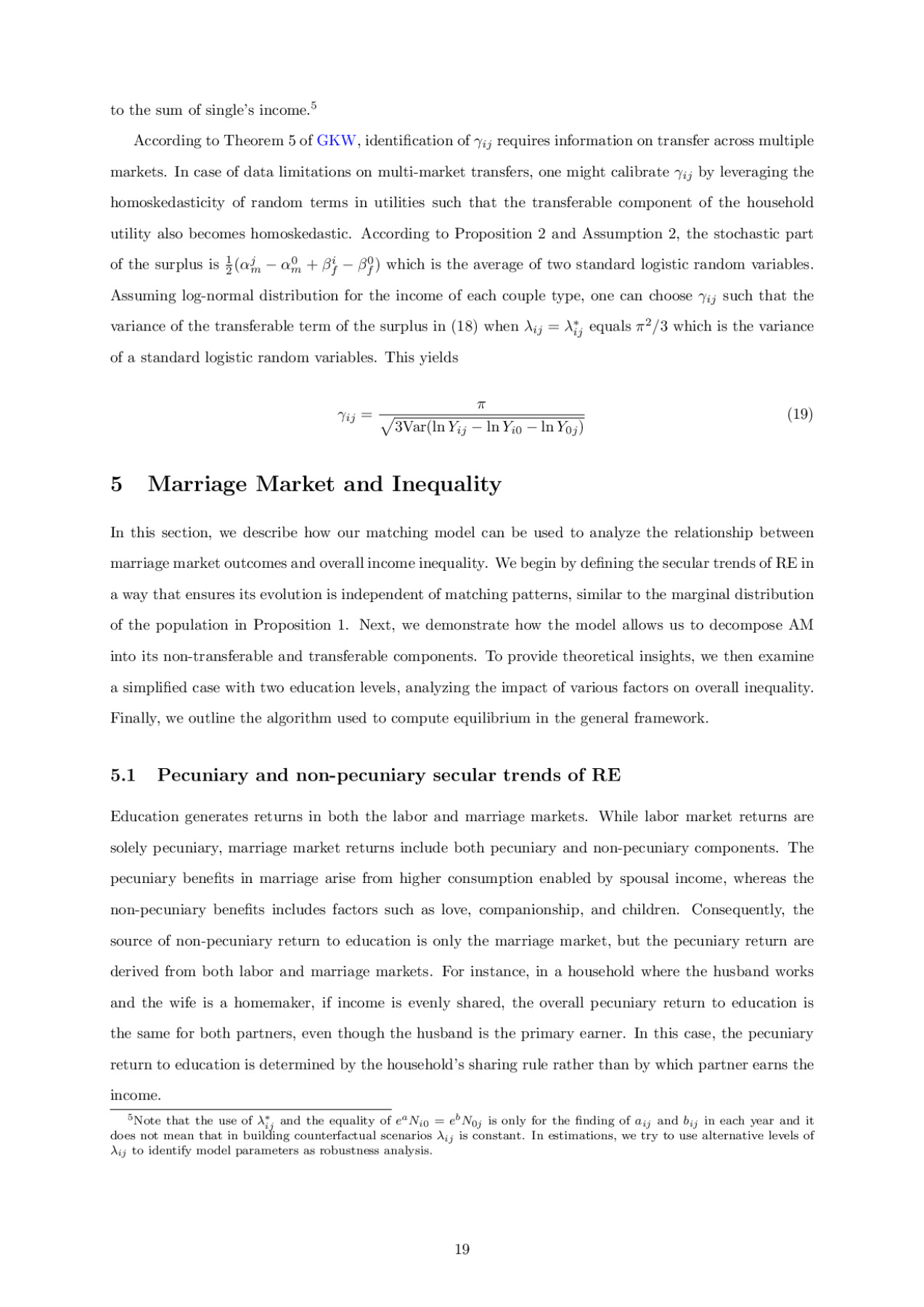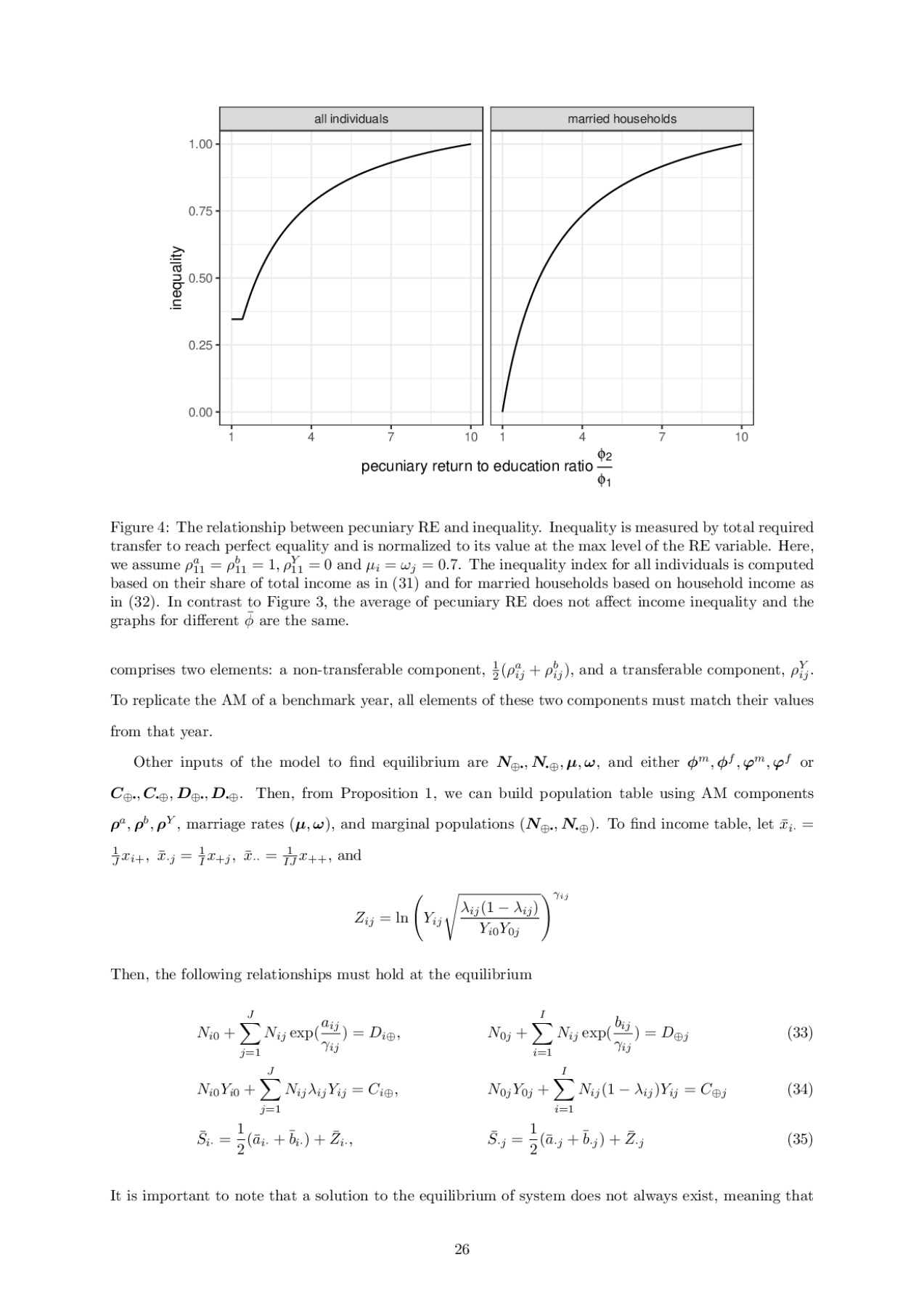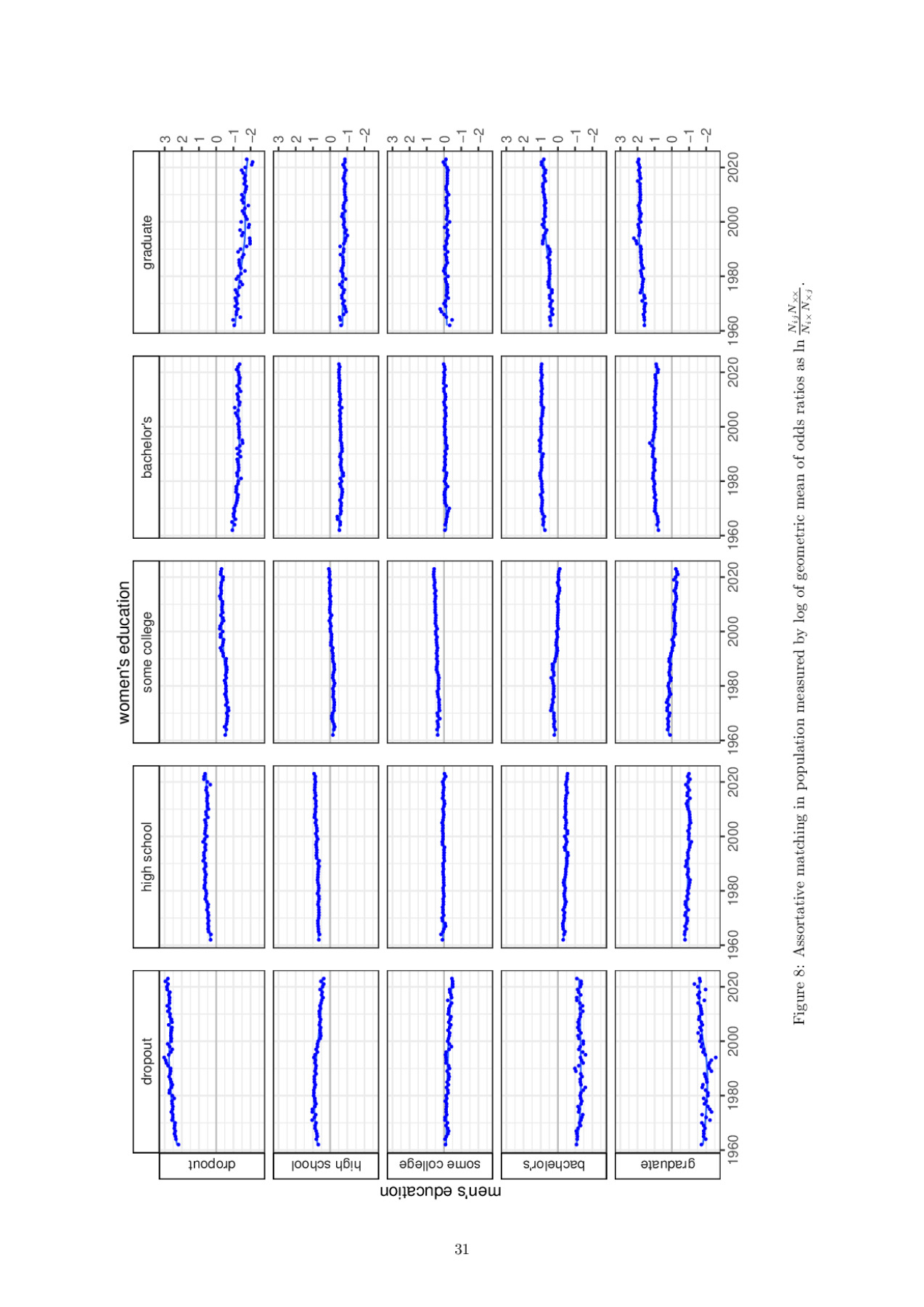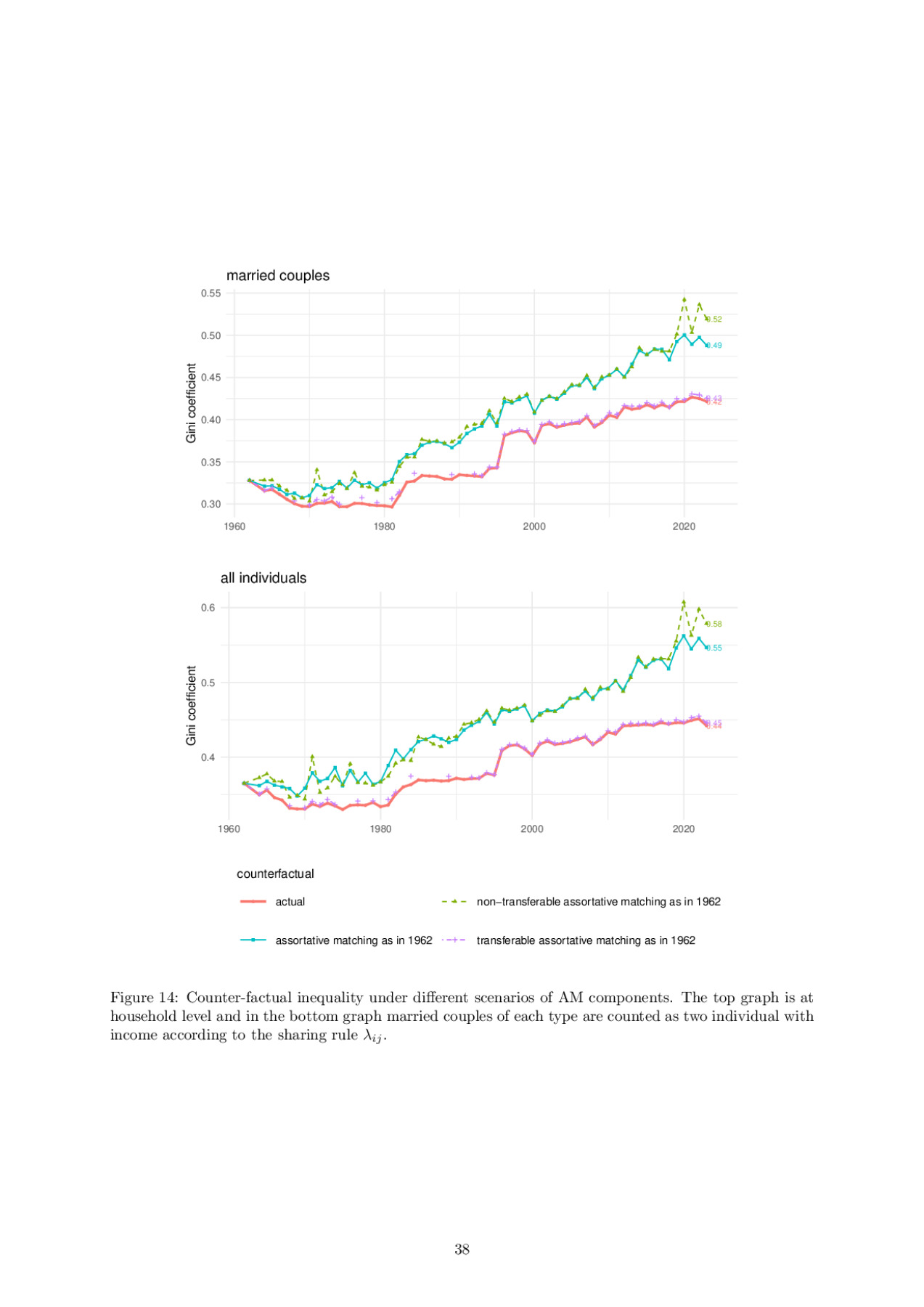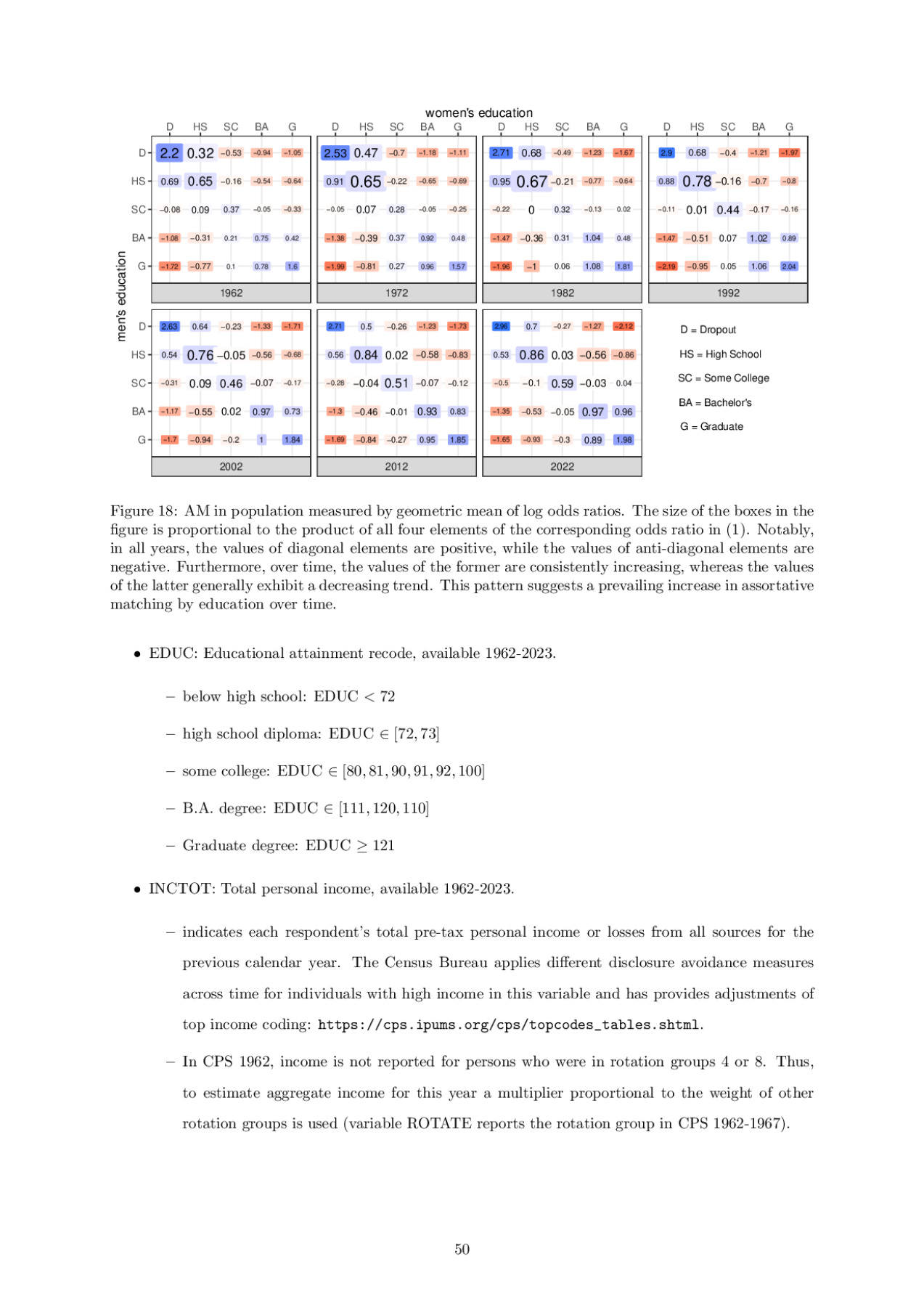2024 North American Summer Meeting: June, 2024
Return to Education, Assortative Matching, and Inequality
Mohammad Hoseini
Previous studies decomposing the growth of household income inequality based on educational assortative matching (AM), assume that income distribution conditional on marriage type is independent of sorting patterns. Using a frictionless matching model with imperfectly transferable utility, we relax this assumption and account for the general equilibrium effects between the return to education (RE) and AM. The model separates AM into transferable and non-transferable components, showing that, controlling for secular RE trends, the transferable component increases inequality, while the non-transferable component reduces it. Estimation of the model using CPS data demonstrates that the rise in AM in the U.S. from 1962 to 2023 stems primarily from its non-transferable component. Consequently, after controlling for RE, AM has reduced cross-sectional income inequality. Furthermore, market returns to education are the dominant driver of inequality, explaining approximately 40\% of the Gini coefficient's increase during this period. Since the tendency to invest in children's human capital is reflected in non-transferable AM, the findings suggest that highly educated couples may be so willing to spend time on their children that it reduces cross-sectional inequality but potentially intensifies long-term inequality.
Preview







